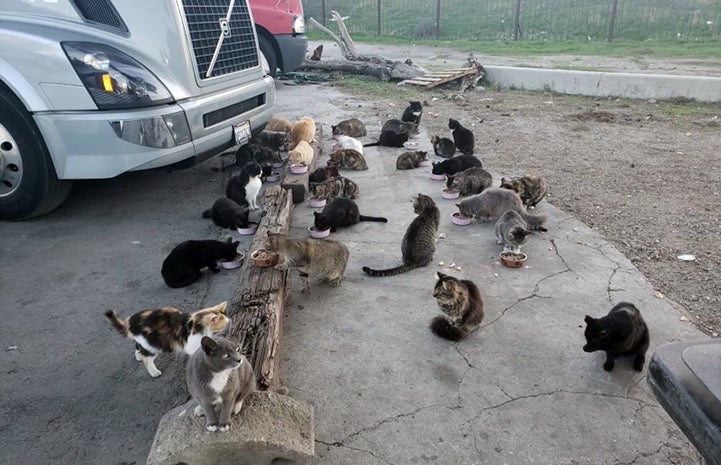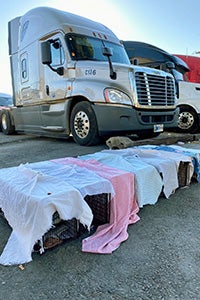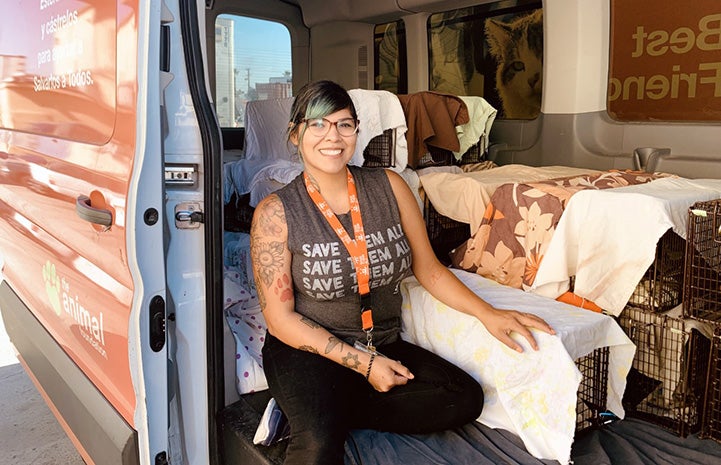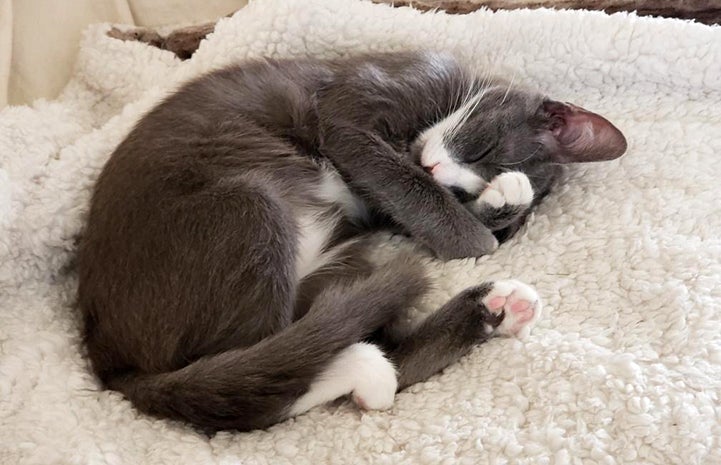Pilot becomes cat rescuer and TNR advocate

Community cats often make their homes in some truly unique surroundings, as one transportation company discovered in Riverside County, California. The employees had grown used to seeing the cats roaming the property but were concerned about their health.
When the company’s sole cargo pilot, Malcolm, saw just how many cats were living on-site, he knew he had to do something. “This was the first time I had seen so many cats out there, all together,” he says. “I knew they needed help.”

A community alternative
 After beginning to feed the cats on a schedule, Malcolm contacted the Riverside County Department of Animal Services for assistance. That’s where he learned about the shelter’s partnership with Best Friends Animal Society to implement a community cat program (CCP).
After beginning to feed the cats on a schedule, Malcolm contacted the Riverside County Department of Animal Services for assistance. That’s where he learned about the shelter’s partnership with Best Friends Animal Society to implement a community cat program (CCP).
Like many community members before him, Malcolm thought the best solution for these cats was to bring them to the shelter where they could be placed for adoption. But because Riverside County takes in thousands of cats a year, it’s not possible to take every cat coming through its doors. Instead, Best Friends CCPs offer an alternative to the stray cats arriving at the shelter — trap-neuter-return (TNR).
Rather than bringing in Riverside’s stray and free-roaming cats to be impounded, the CCP humanely traps them, provides spay/neuter, vaccinates and returns them to the communities they already call home. And with such a proactive group of caregivers already in place, the cats were more than qualified for the program.
[6 random acts of kindness towards animals]

Concern for beloved community cats
Because Malcolm cared deeply for these cats and wanted to make the most informed decision possible, he contacted the Best Friends staff to further discuss the TNR option. Community education plays a large role in the CCPs, with staff often addressing these cat-related concerns and complaints, and working to show the community why TNR is the most effective and humane option.
Malcolm agreed to give TNR a try and scheduled the first of what would be many trapping appointments. When the CCP team arrived, the employees were hesitant about letting them help. “They kept asking us what we were going to do with the cats,” says Susie Aguilar, Best Friends CCP program coordinator. “They wanted to make sure we would bring them back.”
With Malcolm’s assistance, staff members were able to speak with the employees and get everyone on the same page. And once they saw the program in action and that the cats were returned a few days later with their sporty new ear-tips, they knew they had done the right thing.
Over the course of several months, the CCP team was able to humanely trap 43 cats and then spay, neuter, vaccinate and vet them for upper respiratory infections. With each return visit, the cats looked visibly healthier. “Their eyes were clearer and their coats were well-groomed,” says Susie. “We instantly noticed the difference when we went back for our second appointment.”
Malcolm was also amazed: “I know all of the cats now. They’re so fat and happy.”

Flying solo
While the CCP assisted with most of the cat colony, a few kittens still needed more hands-on care. To be spayed or neutered, kittens must weigh at least two pounds, which is usually when they’re about two months old. Since these kittens were too small for surgery and sick with upper respiratory infections, the staff thought they would benefit from being placed in a foster home where they could receive medical treatment.
Inspired by the CCP team’s efforts, Malcolm opened his own home to these young kittens. Though he had never fostered before, when he saw that they needed him, his decision was made. Now, dozens of cats and kittens have found their temporary safe space with him as he works to find a positive outcome for everyone in his care.
[Despite his special needs, this kitten was born to be happy.]
Malcolm has also taken his newfound trapping skills home. Since meeting the CCP team, he has trapped 15 cats in his own neighborhood and is now a full-fledged animal rescuer. Through his efforts, he has met like-minded animal advocates who also dedicate their time to helping their community’s cats. He feels inspired and plans to continue his efforts to help save lives.
“You’ve got to find people where you are,” says Malcolm. “Everyone has different things they can offer: time, money, supplies, space. When you come together you can make a big impact.”

Help cats where you live
If you see free-roaming cats in your neighborhood, take a cue from Malcolm and connect with others to “TNR the cats” and care for them, so they can continue to live outdoors — healthier and without having kittens.
Learn more about community cats
Read more
Chocolate Lab is doting foster mom to tiny kittens.
Saving the lives of animals through community-supported sheltering
Work life purrspective from a barn cat
Photos by Malcolm and Alesha Davidson